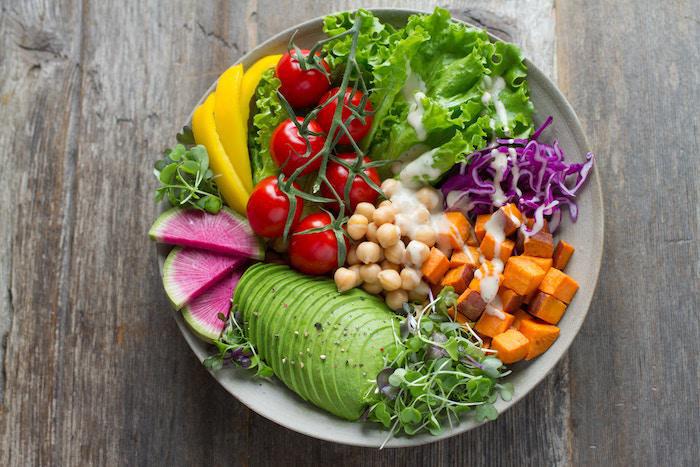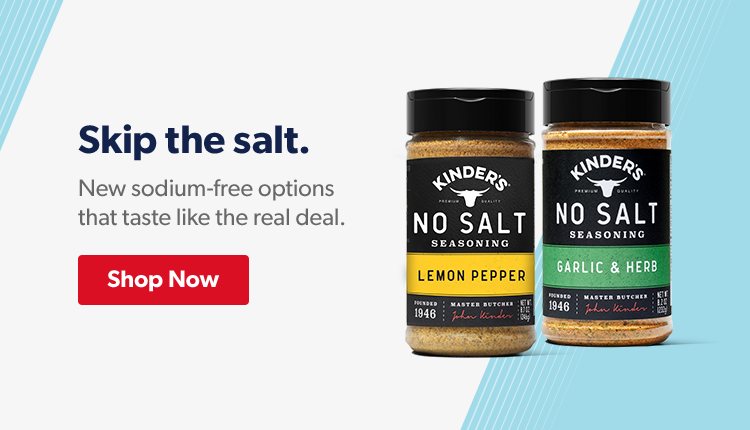
A plant-based diet makes a great choice when it is about an athlete's diet. The diet emphasizes healthy fats, protein, and carbs to improve athletic performance. You must ensure you eat enough protein at each meal. Carb-rich foods may contain some protein, but they often are not sufficient to meet your daily needs. Whole grains are rich in protein and can be paired with higher-protein foods to meet a portion your daily protein requirements.
A plant-based diet can boost athletic performance
A plant-based diet is a great way to improve athletic performance. A plant-based diet helps the body to use energy more efficiently when exercising aerobically. This increases endurance and lowers blood pressure. Plant-based diets are also beneficial for athletes who want to maintain lean bodies.
Carbohydrates
Although carbohydrates are often given a bad name in the diet industry, they are essential for a plant-based athlete diet. Simple: Carbohydrates provide energy for your muscles. Glycogen is also stored in carbohydrates. When glycogen levels become depleted, your performance decreases.
Protein
While athletes may not need all the nutrients, one diet that is plant-based can provide them with all they need. It is also low in fat and contains antioxidants, vitamins, and minerals that are important for athletic performance. In addition, a plant-based diet will increase the athlete's intake of phytonutrients, which may help control their weight and improve their cardiovascular health.

Healthy fats
People are choosing to eat plant-based diets more often to maintain a healthy lifestyle and avoid chronic diseases. A plant-based diet offers many health benefits including a lower intake of saturated fat. It is also beneficial for amateur athletes, who may benefit from avoiding saturated fat.
Vegetables and fruits
A plant-based athlete diet focuses on unprocessed and whole foods. It should have a wide variety healthy fats and legumes in order to meet the calorie demands of an active person. These foods are rich sources of antioxidants, which can help reduce inflammation and cell damage. This makes it easier for the body to recover from intense exercise.
Beans
A plant-based diet for runners is a great option to support your nutrition and athletic performance. This type of diet tends to be higher in fibre, which means you'll feel full faster. It is important to eat healthy meals every day to ensure you are getting enough energy. It is important to eat small meals frequently throughout the day and snack on carbohydrate rich foods during recovery and training. A banana, or peanut butter power-muffin, is a great snack to help you recover from a hard work out.
Whole grains
To maximize nutrition for plant-based athletes, whole grain intake is crucial. These unprocessed carbohydrates provide athletes with a lot of nutrition and fiber. They also contain almost all the essential vitamins, minerals, and vitamins they need. Raw carrots are an excellent source of vitamin A. One cup of carrots contains 600% of the recommended daily intake. They are also rich in Vitamin C as well as selenium which can help athletes combat free radicals during intense workouts. They can also been eaten raw or blended into a refreshing post-workout drink.
Chia seeds
The body is greatly benefited by the dietary fiber found in chia seed. This includes a reduction in the risk for heart disease, certain kinds of cancer, and diabetes. It is also a rich source of essential amino acid, magnesium, potassium, and other minerals. Moreover, it contains 11g of fiber per serving, exceeding the recommended daily allowance of 30g. High-fiber diets can prevent type-2 diabetes and heart disease.

Fruits
A plant-based diet is incomplete without fruits. These fruits can supply energy and help satisfy your cravings. High levels of phytonutrients (which combat inflammation and oxidative strain) are found in fruits. You can also get a lot of water from fruits and vegetables, which helps you retain fluid. Plant-based foods can also help you meet your daily protein requirements.
Veggies
Focusing on whole, unprocessed foods is one of the key aspects of a plant-based athlete diet. A complete diet with all the nutrients that they require is possible by choosing vegetables. Due to their low calories, it can be difficult for athletes to eat a plant-based diet. This is why plant-based athletes should include whole grains, healthy fats and legumes in their diet.
FAQ
How can I get enough vitamins?
You can obtain most of your daily requirement through diet alone. However, if you are deficient in any particular vitamin, taking supplements can help. A multivitamin can contain all the vitamins that you need. You can also purchase individual vitamins from your local pharmacy.
Talk to your doctor about the best foods for vitamins if you're concerned about not getting enough nutrients. For example, dark green leafy vegetables such as spinach, broccoli, kale, collard greens, turnip greens, mustard greens, bok choy, romaine lettuce, arugula, and Swiss chard are rich in vitamins K and E. Other good sources include oranges, tomatoes, strawberries, cantaloupe, carrots, sweet potatoes, pumpkin, and squash.
Ask your doctor if there is any doubt about how much vitamin you should be taking. He or she will recommend the appropriate dosage based on your medical history and current health status.
What is the difference in a calorie from a Kilocalorie?
Calories are units that measure the energy content of food. The unit of measurement is called a calorie. One calorie contains the energy needed to raise the temperature of one gram of water by one degree Celsius.
Kilocalories are another way to describe calories. Kilocalories measure in thousandths (or calorie) of a calorie. 1000 calories are equal to one kilocalorie.
What is the difference among a virus or bacterium and what are their differences?
A virus can be described as a microscopic organism incapable of reproducing outside its host cell. A bacterium, a single-celled organism, reproduces by splitting into two. Viruses measure only 20 nanometers in diameter, but bacteria is up to 1 millimeter in size.
Viruses can spread from contact with bodily fluids that are infected such as saliva, urine or semen. Bacteria can easily be spread from direct contact to contaminated objects and surfaces.
Viruses can enter our bodies through cuts, scrapes, bites, or other breaks in the skin. They may also enter through the nose, mouth, eyes, ears, vagina, rectum , or anus.
Bacteria can enter the body through cuts, scrapes burns and other injuries to the skin. They may also come into our bodies through food, water, air, soil, dust, or animals.
Both bacteria and viruses cause illness. But viruses can't multiply within their host. They can only infect living cells and cause illness.
Bacteria can multiply within their hosts and cause illness. They can invade other areas of the body. That's why we need antibiotics to kill them.
How do I determine what's good?
You need to listen to your body. Your body will tell you how much exercise, nutrition, and sleep you need. To be healthy, you must pay attention and not push yourself too hard. You must listen to your body to ensure you are healthy.
Statistics
- According to the 2020 Dietary Guidelines for Americans, a balanced diet high in fruits and vegetables, lean protein, low-fat dairy and whole grains is needed for optimal energy. (mayoclinichealthsystem.org)
- WHO recommends reducing saturated fats to less than 10% of total energy intake; reducing trans-fats to less than 1% of total energy intake; and replacing both saturated fats and trans-fats to unsaturated fats. (who.int)
- This article received 11 testimonials and 86% of readers who voted found it helpful, earning it our reader-approved status. (wikihow.com)
- According to the Physical Activity Guidelines for Americans, we should strive for at least 150 minutes of moderate intensity activity each week (54Trusted Source Smoking, harmful use of drugs, and alcohol abuse can all seriously negatively affect your health. (healthline.com)
External Links
How To
What does the meaning of "vitamin?"
Vitamins are organic compounds naturally found in food. Vitamins help us absorb nutrients in the foods we consume. Vitamins are not made by the body, so they must be obtained through food.
There are two types: water-soluble and fat-soluble vitamins. Water-soluble vitamins dissolve easily when they are dissolved in water. Some examples include vitamin C,B1 and B2 vitamins (thiamine), B2 and riboflavin, B3 and niacin, B6 vitamins (pyridoxine), B6 vitamins (niacin), folic acids, biotin, pantothenic acids, and Choline. Fat-soluble vitamins are stored within the liver and in fatty tissue. You can find vitamin D, E K, A and beta carotene as examples.
Vitamins can be classified according to biological activity. There are eight major vitamin groups:
-
A – Essential for normal growth, and the maintenance of good health.
-
C is important for nerve function and energy production.
-
D - necessary for healthy bones and teeth.
-
E - required for good vision & reproduction.
-
K – Required for healthy muscles & nerves.
-
P - Vital for strong bones and teeth.
-
Q – aids digestion and absorption.
-
R is required for the production of red blood cells.
The recommended daily allowance for vitamins (RDA) varies according to age, gender, or physical condition. RDA values are set by the U.S. Food and Drug Administration (FDA).
For adults 19 years and over, the RDA vitamin A intake is 400mg/day. Pregnant women require 600 micrograms daily to support fetal development. Children ages 1-8 require 900 micrograms per day. Infants under one year of age require 700 micrograms per day, but this amount decreases to 500 micrograms per day between 9 months and 12 months of age.
Children ages 1-18years who are obese need 800 micrograms per day while those who are overweight need 1000 micrograms per day and children who are underweight need 1200 micrograms per day to meet their nutritional needs.
Children aged 4-8 who have anemia are required to consume 2200 micrograms of Vitamin C daily.
2000 micrograms is the minimum daily intake for general health in adults older than 50 years. Due to their increased nutrient needs, pregnant and breastfeeding women need 3000 micrograms daily.
1500 micrograms are required daily by adults over 70 because they lose approximately 10% of their muscle each decade.
Women who have been pregnant or are lactating require more than the RDA. Pregnant woman need 4000 micrograms daily in pregnancy and 2500 per day after childbirth. Breastfeeding moms need 5000 micrograms per daily when breastmilk production occurs.